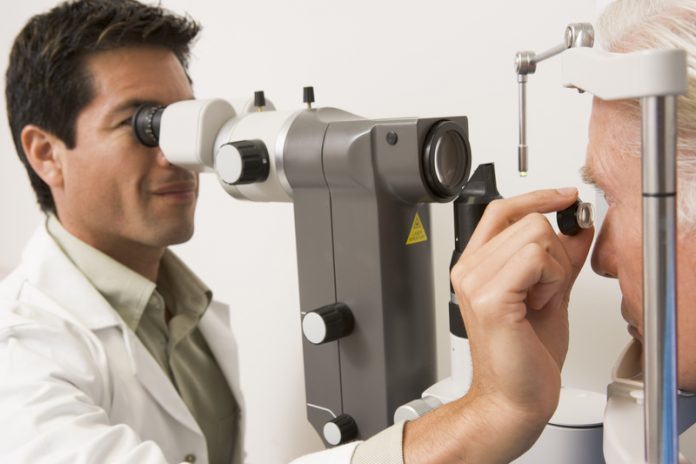Low vision can be a blight on the lives of those it affects, which is why it’s a National Eye Institute priority, as Dr Cheri Wiggs told Open Access Government
Around 4.2 million people in America are visually impaired, which is expected to increase to 7.2 million in 2030. Of those 7.2 million in 2030, 5 million will have what is known as low vision. Low vision is an impairment characterised by partial sight that cannot be corrected or treated by wearing glasses, contact lenses or through surgery. With people living longer it has now become a major public health concern in America.
Having low vision can have a devastating impact on someone’s life. The impact on day-to-day activities can leave people feeling depressed and anxious. Low vision sufferers may struggle to carry out everyday tasks, such as reading, shopping, cooking, driving and even matching up clothes when getting dressed. Although the majority of people who suffer from low vision are said to be 65 years and older, younger people and even children can also suffer from this health issue.
There are a wide range of causes of low vision, from eye diseases, cataracts to glaucoma. Health problems such as diabetes can also lead to low vision developing. The National Eye Institute (NEI) in America, part of the National Institutes of Health (NIH), supports research and other programmes, relating to visual disorders including low vision.
Causes of low vision issues
Dr Cheri Wiggs, Program Director for the Low Vision and Blindness Rehabilitation Program at the NEI, speaks to Editor Laura Evans about the importance of raising awareness for people with low vision and how advances in science have helped over the years. “The majority of low vision issues are caused by eye diseases and/or injury, but brain damage can also lead to visual impairment,” explains Dr Wiggs.
“There has been more attention recently on cortical blindness, or cortical visual impairment. This is where people can still see, but they have difficulty interpreting that visual information. Some people have double or tunnel vision, or their vision is extremely blurred. This can be caused by traumatic brain injury, and we are seeing a lot of people that come back from combat and complain about these visual issues after a situation with an IED.
“Cortical visual impairment can also be caused by insults to the brain at birth. Vision loss due to neurological damage to the brain affects both children and adults,” adds Dr Wiggs.
Age-related macular degeneration
As the majority of people with low vision are over the age of 65, this could become a bigger problem due to ageing populations. One of the most common causes of low vision is age-related macular degeneration. However, there are a few studies being done to ascertain how to prevent low vision in later life.
“There have been a few studies on vitamin regimens to keep these eye health problems at bay,” says Dr Wiggs.
“In particular, a clinical trial examined whether taking antioxidants and zinc would reduce the risk of developing advanced age-related macular degeneration (AMD). The results showed that the dietary supplements, while not a cure for AMD, could help at risk older people keep their remaining vision.
“However, it is also integral to ensure that the public are aware of the importance of regular eye examinations that include looking at the retina. Because if you can catch it early you may be able to start some therapy that can at least decrease the probability that it will advance.
“The biggest problem is how low vision can impact day to day life,” adds Dr Wiggs. “It really does impact people’s quality of life and their independence. People who have low vision are at an increased risk of falls, which means fractures, time spent in bed and limited mobility for a number of reasons. If part of your vision is absent then its difficult manoeuvring around, including driving but even just walking. People with low vision are at an increased risk for depression, and it can also complicate the management of other health issues.”
Understanding the mechanisms behind low vision
Research is integral in order to better understand the mechanisms behind the problem and to develop therapies and rehabilitation that are tailored to help people who have low vision cope with everyday living. As science has evolved, technology is key to this area and has led the way to develop a number of assistive devices that help people with low vision carry out everyday tasks, such as reading.
“Part of the mission of the National Eye Institute (NEI) is to address the special health requirements of the visually impaired,” Dr Wiggs says. “We have encouraged collaborations between vision scientists and people from both engineering and computer science backgrounds to help develop creative strategies to address some of the issues faced by people with low vision.”
As well as assistive devices, rehabilitation plays a major role in helping people to adapt and maintain their current lifestyle. It can help them to feel more confident and comfortable with their vision loss, by teaching them how to move safely around the home, continue to read, cook and do other activities, and find resources, adaptive devices, and support. Rehabilitation is something that the National Eye Institute supports. The low vision and blindness rehabilitation programme at the NEI aims to develop further understanding about those already living with low vision.
“In addition to the applied translational work that develops assistive devices and rehabilitation strategies, NEI also supports basic science on the impact of vision loss,” explains Dr Wiggs.
“For example, neuroscience research indicates that the brain reorganises functionally after losing sensory inputs; for instance, areas of the brain used for processing visual information get recruited for other functions, such as touch. The long-term impact of visual impairments on brain structures and functions remain unclear and could be very useful for informing rehabilitation efforts,” she adds.
“We have a lot of behavioural studies which we also support that target the types of changes you see in crucial activities, such as navigation, driving, reading strategies, and movement in people who are losing their vision. So, even though that’s more on the basic science side, it’s always with the understanding that information can inform whatever rehabilitation strategies you might develop.”
February is Low Vision Awareness Month at the NEI, as they raise awareness for people living with low vision, as well as their family and friends.
Dr Cheri Wiggs
Program Director – The Low Vision and Blindness Rehabilitation Program











